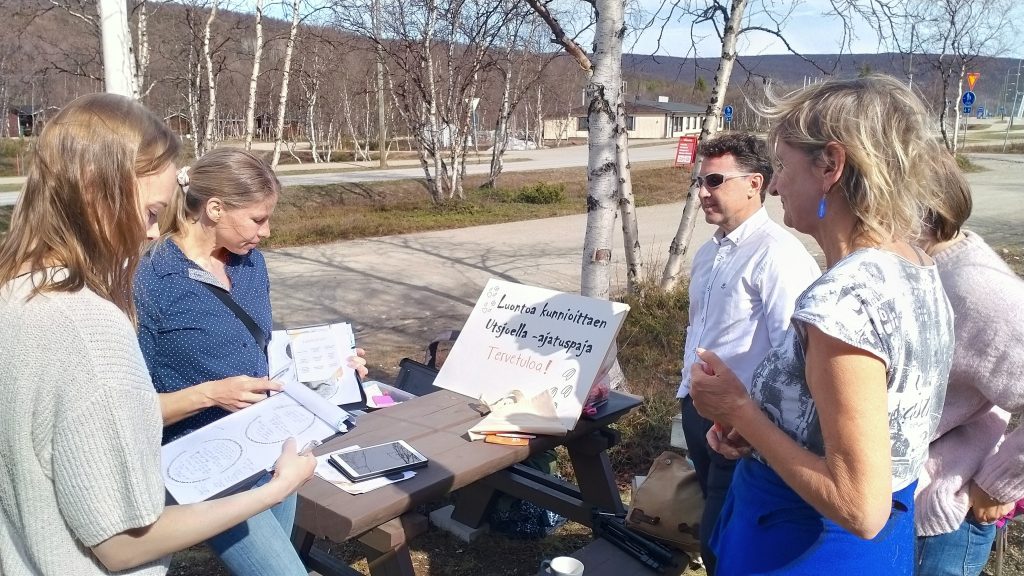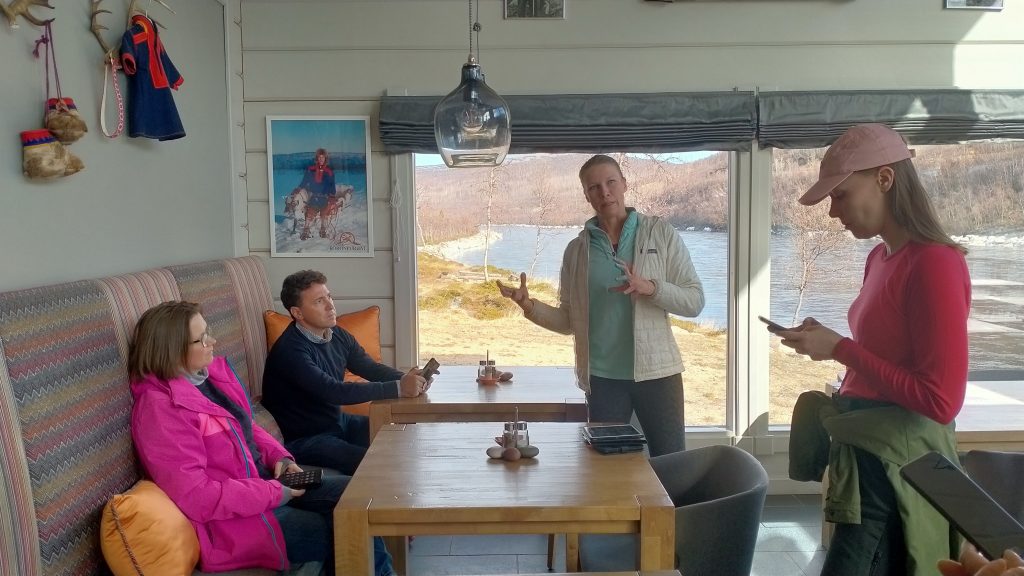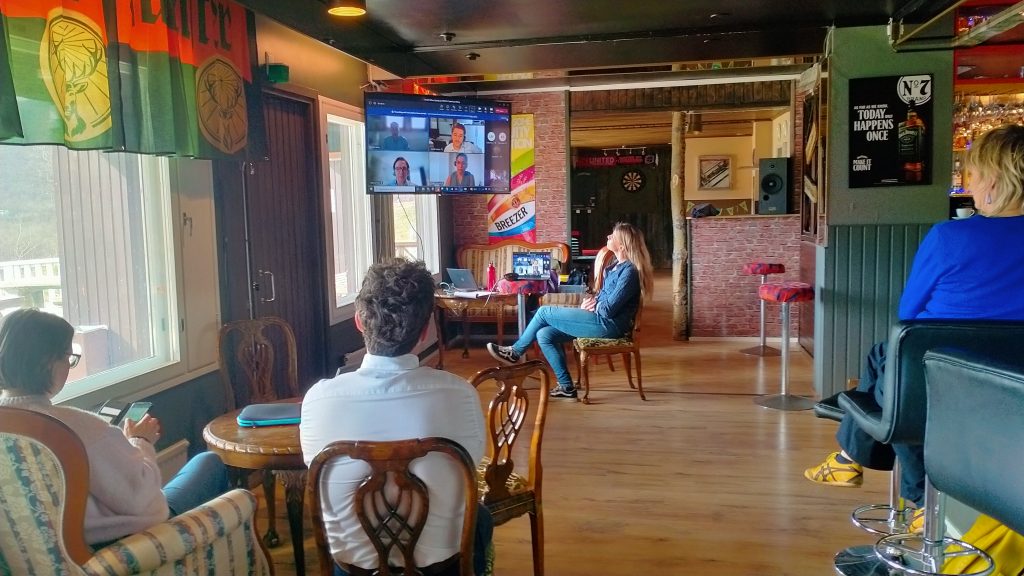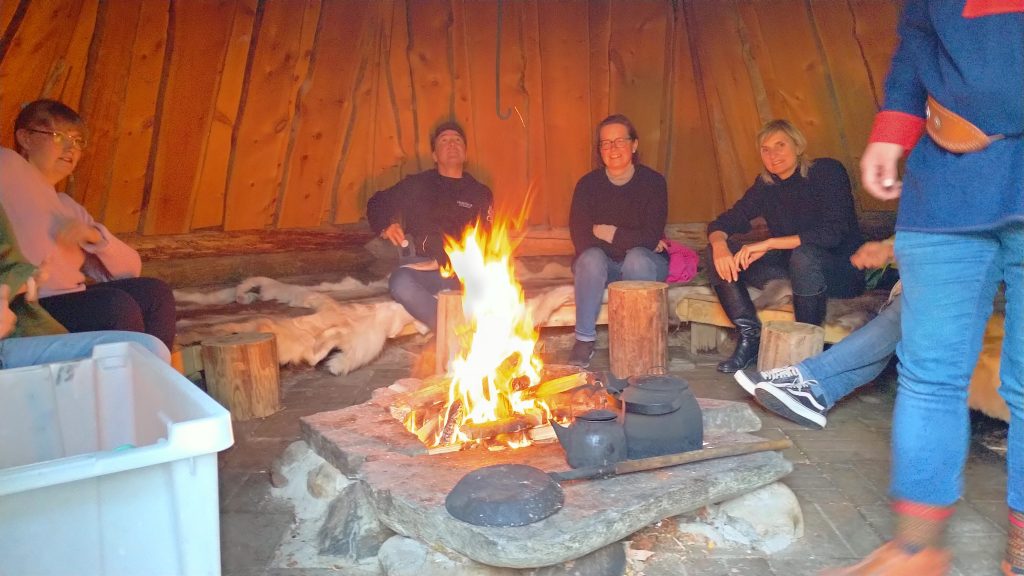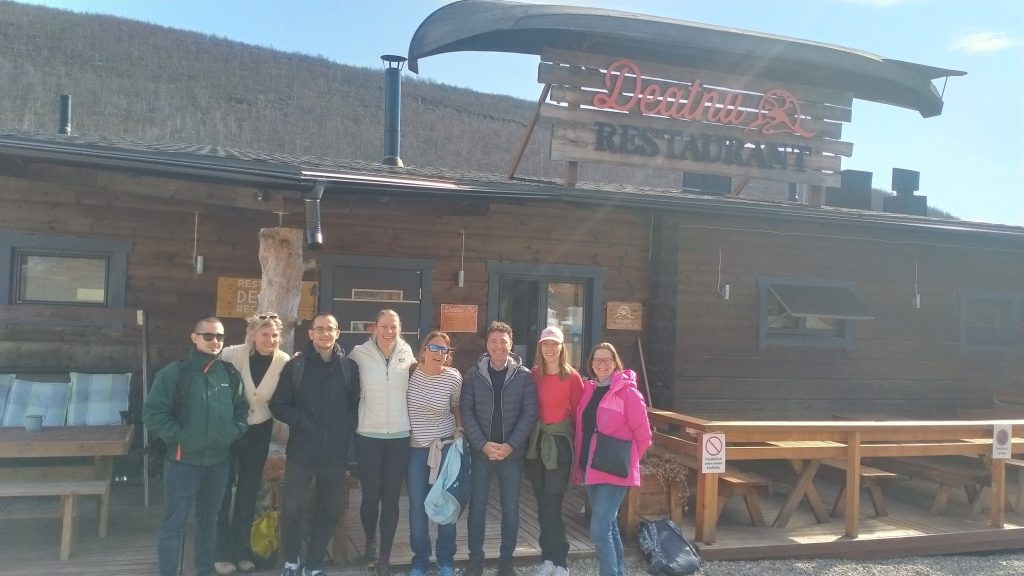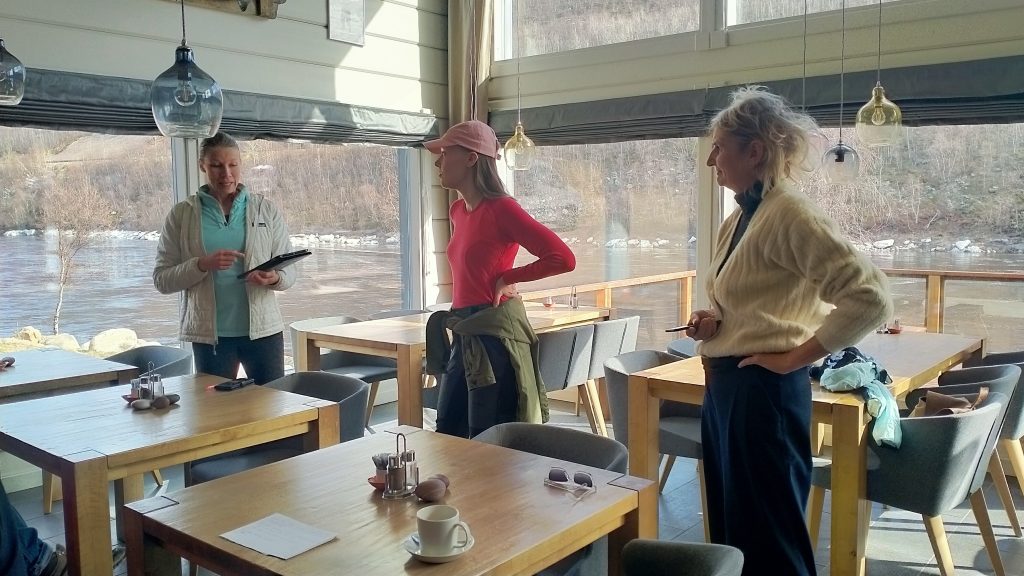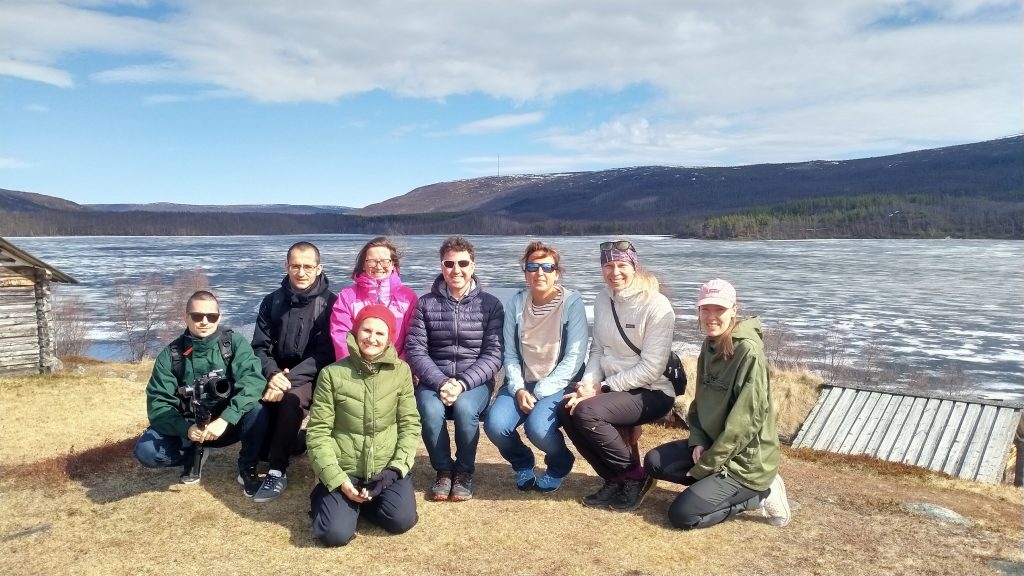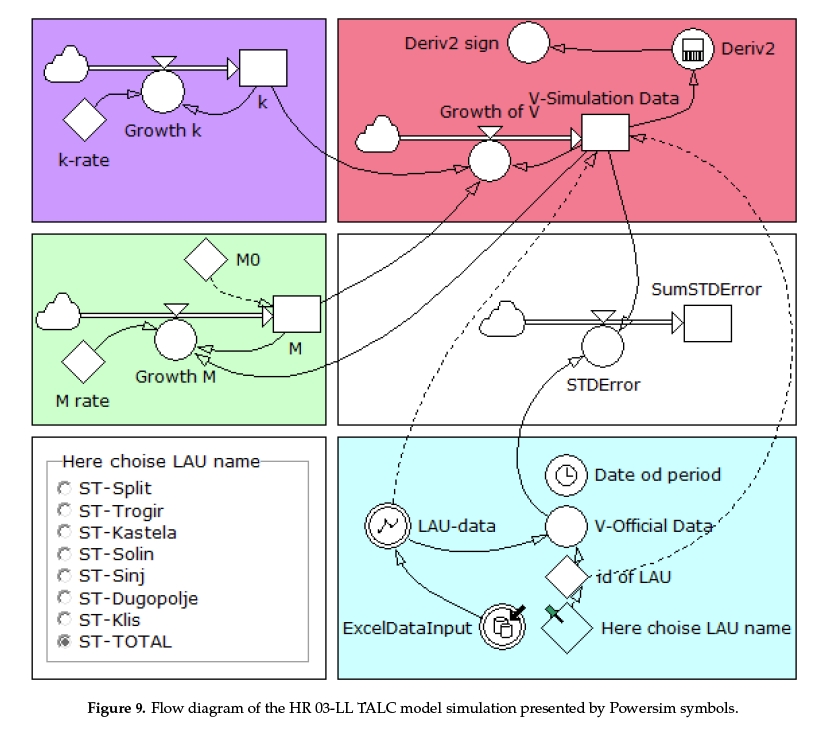Utjoski, Scheldeland and Huesca Living Labs share success stories of sustainable cultural tourism
On 24 and 25 May, Utjoski’s living lab hosted one of the six exchanges programmed between the LLs of the SmartCulTour project. On this occasion, the Huesca and Scheldeland living lab managers and main stakeholders visited Finland to learn the methodologies and see the interventions made by their Finnish counterparts first hand. This was a great opportunity to share unique experiences to enrich and improve the quality of tourist services in the project’s regions.
On the first day, one of the main stakeholders of the Utsjoki living lab gave their visitors a guided tour to see the cultural and tourist attractions of the area and learn more details, in particular about the Sami culture that the Utsjoki LL is focusing on in their analysis. In the afternoon, the group tested the Placemaking Method for the first time in the project. The method uses a working dynamics approach to favour connexion between tourists and their surroundings and enhance the services they demand and the experiences they enjoy at their tourist destinations.
The next day was devoted to a working session with some of the LL stakeholders, giving the Spanish and Belgian teams the chance to learn more about the work in Utsjoki and exchange opinions with the Finnish participants. They all took part in a working meeting focused on improving tourist proposals previously designed for the territory. They also examined the major results of the tourist survey to identify the strengths and weaknesses of Utsjoki as a sustainable cultural tourist destination.
Scheldeland will be hosting the next exchange in June later this month, followed by another exchange in Huesca in October 2022.
